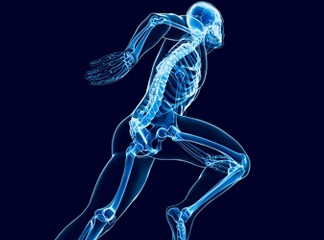Introduction
In the world of health and wellness, recovery from an injury can often feel like a daunting journey. Whether it’s a sprained ankle, a strained back, or chronic pain from an old injury, the path to healing typically involves more than just rest. One increasingly popular approach is osteopathy, which integrates the principles of biomechanics with holistic treatment methods. This article dives deep into osteopathy after injury: steps toward full recovery, offering insights from experts in the field and practical advice for those osteopath southlake tx seeking to regain their health.
Understanding Osteopathy
What is Osteopathy?
Osteopathy is a branch of medicine that emphasizes the interrelationship between the body’s structure and function. Practitioners, known as osteopaths or osteopathic doctors, are trained to assess and treat various conditions by focusing on musculoskeletal health.
The Philosophy Behind Osteopathic Medicine
At its core, osteopathic medicine promotes the idea that the body has an innate ability to heal itself. By addressing issues related to bones, joints, muscles, and ligaments through hands-on techniques, osteopaths aim to facilitate this natural healing process.
The Role of Biomechanics in Osteopathy
Biomechanics plays a crucial role in osteopathy by helping practitioners understand how injuries affect body movement. Through assessing posture and muscle function, an osteopathic doctor can identify underlying issues contributing to pain and discomfort.
Injury Types Commonly Treated by Osteopaths
Musculoskeletal Injuries
Musculoskeletal injuries are among the most common reasons individuals seek osteopathic care. From sports injuries to repetitive strain disorders, these conditions often benefit significantly from osteopathic interventions.
Spinal Injuries
The spine is central to overall bodily function. Injuries in this area can lead to pain radiating throughout the body. An osteopath can provide targeted treatments aimed at alleviating spinal discomfort.
Joint Pain and Dysfunction
Whether due to arthritis or acute injuries, joint issues can severely limit mobility. Osteopathic treatments focus on restoring joint function and reducing inflammation.
Osteopathy After Injury: Steps Toward Full Recovery
Recovering from an injury involves several vital steps that are well-supported by osteopathic principles.
1. Initial Evaluation by an Osteopath
- A thorough assessment of your condition. Understanding your medical history and lifestyle.
2. Creating a Personalized Treatment Plan
- Tailoring interventions specific to your needs. Incorporating exercises aimed at improving strength and flexibility.
3. Hands-On Techniques
- Utilizing manual therapy methods such as manipulation and mobilization. Focusing on relieving pain while enhancing mobility.
4. Rehabilitation Exercises
- Implementing a gradual program of physical activity. Emphasizing biomechanical movements that promote healing.
5. Lifestyle Modifications
- Advising on ergonomic improvements in daily activities. Discussing nutrition's role in recovery.
The Importance of Communication with Your Osteopath
Maintaining open lines of communication with your osteopath is essential for effective recovery. Regularly updating them about your progress allows for adjustments in your treatment plan based on how your body responds.
How Long Does Recovery Take?
A common question many patients ask is, “How long will it take for me to recover?” The answer varies widely based on factors including:
- The type of injury sustained. Individual health status. Commitment to following the prescribed treatment plan.
Generally speaking, acute injuries might see improvement within weeks, while chronic conditions may require ongoing management over several months or even years.
Benefits of Choosing Osteopathy for Injury Recovery
Holistic Approach: Unlike traditional methods that often focus solely on symptoms, osteopathy addresses underlying causes.
Personalized Care: Each treatment plan is tailored specifically for you as an individual—no one-size-fits-all solutions here!
Enhanced Mobility: Through specific techniques aimed at improving range of motion, patients frequently report feeling more agile post-treatment.
Pain Management: Effective strategies for managing pain without relying solely on medication make osteopathy appealing for many patients looking for alternatives.

FAQs About Osteopathy After Injury
1. What conditions can be treated by an osteopath?
Osteopaths treat a wide range of conditions including but not limited to musculoskeletal pain (back pain, neck pain), headaches, sports-related injuries, joint problems (arthritis), and postural issues.
2. How does osteopathy differ from chiropractic care?
While both practices focus on musculoskeletal health, chiropractic care primarily concentrates on spinal adjustments whereas osteopathy takes a broader approach that includes all body systems and manual therapies beyond spinal alignment alone.
3. Is it safe to visit an osteopath after surgery?
Yes! Many patients find relief through osteopathic treatment post-surgery; however, it's important always to consult with both your surgeon and your osteopath regarding timing and appropriate treatments after surgical procedures.
4. Do I need a referral from my primary care doctor?
No referral is typically needed; you can directly schedule an appointment with an osteopathic doctor unless required by certain insurance plans or specific medical protocols set forth by your provider network.
5. Will my insurance cover visits with an osteopath?
Coverage varies widely depending on individual insurance policies; it's best practice to check with your provider before scheduling appointments regarding reimbursement options associated with treatments rendered under osteopathic medicine frameworks.
6. Can children benefit from osteopathic treatment after injury?
Absolutely! Pediatric patients often experience successful outcomes through tailored treatments provided by trained pediatric osteopaths who specialize in treating children’s unique anatomical structures and growth considerations during recovery periods!
Conclusion
Navigating the path toward recovery after an injury doesn’t have to be overwhelming especially when utilizing effective approaches such as those found within osteopathy principles! This comprehensive guide outlines essential steps toward facilitating healing while providing insight into how one might engage effectively with their chosen practitioner along every step of this process—whether you're facing challenges related specifically around spine alignment issues or broader concerns linked with lifestyle habits affecting overall wellness goals moving forward post-injury phase engagements! Remember that healing takes time but armed with knowledge gained here today about osteopathy after injury: steps toward full recovery journey ahead looks promising indeed!
By understanding how these strategies work together harmoniously towards restoring balance across all bodily systems through functional rehabilitation modalities offered exclusively within scope defined practices like those represented at North Texas Musculoskeletal Medicine—and beyond—you'll find yourself well-equipped emotionally psychologically leading into future successes both personally professionally alike!